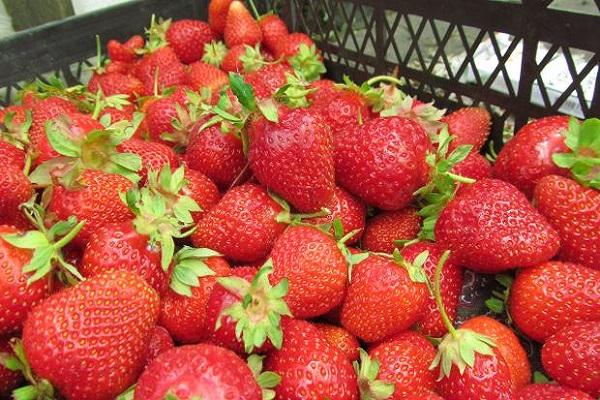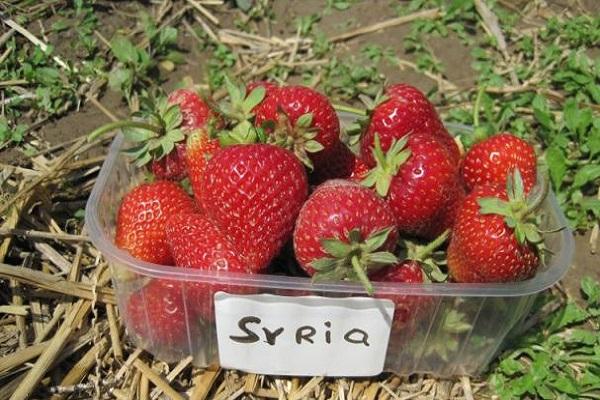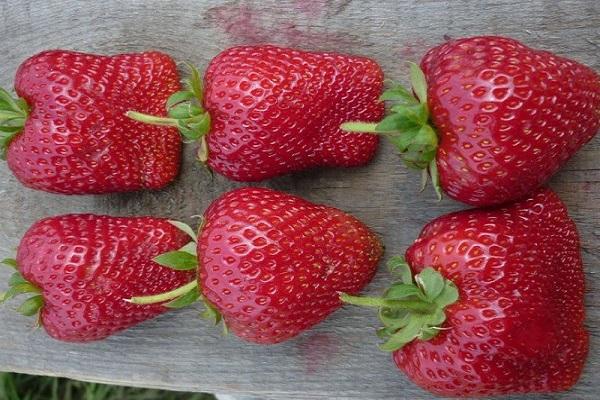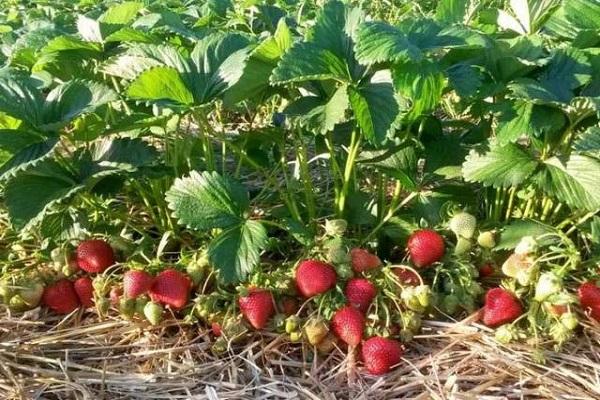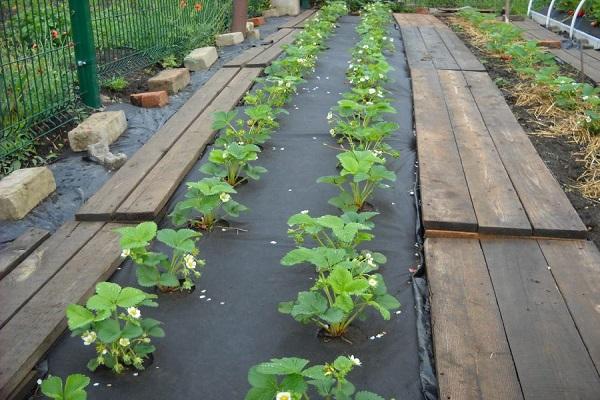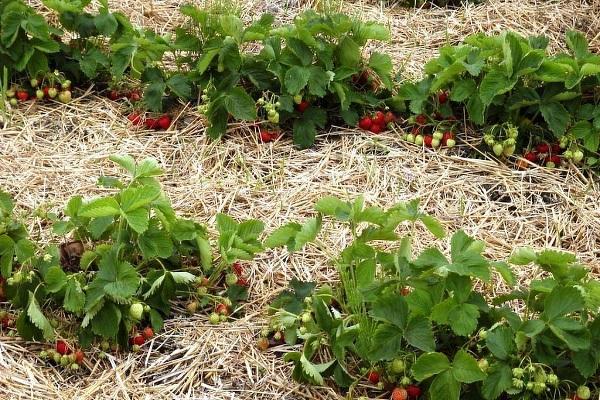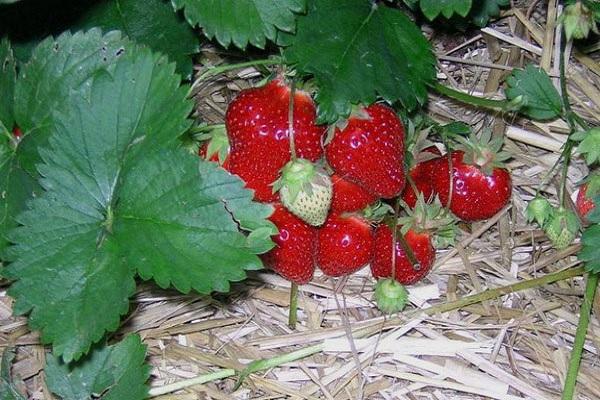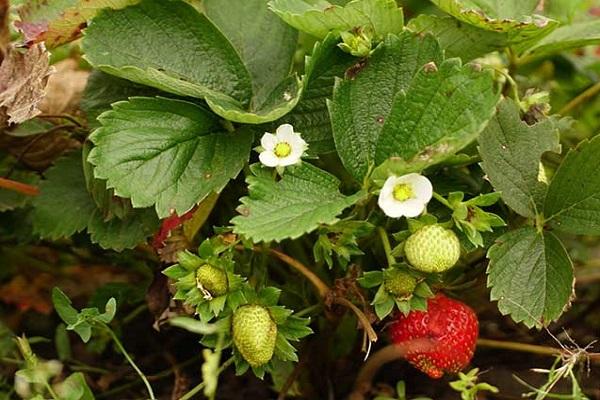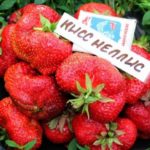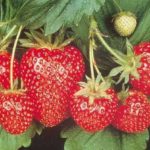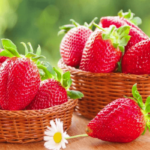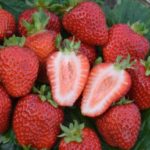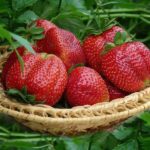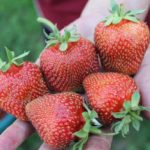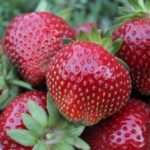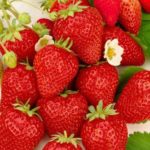Strawberry Syria is considered one of the popular varieties among Russian gardeners. The plant has earned its popularity due to its many advantages compared to other varieties. From the description of the Syria garden strawberry variety, it is clear that it is suitable for both home and industrial cultivation.
- Characteristics and description of Syria strawberries
- Pros and cons of strawberries Syria
- Rules for growing the variety
- Time and place of landing
- Preparation of planting material
- Disembarkation
- Specifics of care
- Watering
- Fertilizer
- Weeding and loosening
- Mulching
- Wintering
- Diseases and pests
- Reproduction of Syria
- Cleaning and storage rules
Characteristics and description of Syria strawberries
When describing the Syrian garden strawberry variety, first of all, one should note its wonderful taste and aroma, as well as its attractive appearance. Strawberry Syria is a non-renewable mid-season variety for universal use. Breeders from Italy have developed a species suitable for use in continental climates. The plant calmly tolerates heat, frost, and moderate drought.
The bushes of the plant are powerful, with many leaves, and medium spreading. The berries, weighing up to 25 g, are held on strong peduncles. The leaf blades are dark green, with wrinkles. There is a moderate amount of tendrils in strawberries. Open ground in the middle zone is most suitable for propagation.
The variety has a rich sour-sweet taste with a pronounced strawberry aroma. The juicy fruits are red in color, conical, elongated. The variety tolerates transportation well, so gardeners often plant it for sale.
Pros and cons of strawberries Syria
From the description of the Syrian strawberry variety it follows that it has a number of advantages:
- frost resistance;
- large fruit;
- versatility;
- excellent taste and pleasant aroma;
- good transportability;
- resistance to fungal diseases and pests;
- industrial breeding.
The plant tolerates long periods of rain and prolonged drought. The advantage of Syria is also the stability of fruiting - the berries do not become smaller even in the 3rd year of cultivation. The first fruit harvest from a bush is approximately 300 g, and in subsequent years - up to 1 kg.
Garden strawberries contain vitamins A, B, C, E, which normalize the functioning of the heart and blood vessels, support the immune system, produce collagen, and fight cancer.The presence of many microelements in fruits regulates cholesterol levels in the blood, normalizes blood pressure and the functions of the digestive system.
The berries can be eaten by people suffering from diabetes. The fruits of Syrian garden strawberries are used in cooking and for the manufacture of cosmetics.
Among the disadvantages, the plant's susceptibility to some bacterial diseases should be noted.
Rules for growing the variety
The Syria variety is propagated by seedlings and occasionally by seeds. Before planting, an area for placing planting material is selected and prepared.
Time and place of landing
Plants are planted in early spring, after frosts have ended. The site should be selected in advance in order to have time to prepare it for planting seedlings, 1.5-2 months in advance. It is not recommended to plant strawberries in places where zucchini, tomatoes, potatoes, pumpkins, peppers, and zucchini grew, as the plants may become infected with similar diseases.
The place to place the bushes should be open, without shading. Be sure to choose a flat area, without slope, groundwater must be at depth. Plants grow well in light, loose, permeable soil, which contains many nutrients. Sandy loam, loamy, slightly acidic soils are ideal for plants.
If the soil is poor, then fertilizing (ash, humus) is applied 1.5-2 months before planting the seedlings. Ash is introduced during planting of planting material into the hole.
Preparation of planting material
If planting occurs as seedlings, then the material should have root shoots of about 8 cm and at least 3 leaves. It should be planted in moist soil.
Disembarkation
The two-line method is most suitable for planting garden strawberries.Syria strawberries have a well-developed root system, so they need deep holes. The distance between holes is at least 50 cm, between rows up to 70 cm.
Specifics of care
In order for the plant to develop well and bear fruit, it requires special care.
Watering
It is best to use drip irrigation for irrigation. But if there is none, you need to moisturize 1-2 times a week, in the morning and evening hours. For better adaptation of plants, warm water is used.
Fertilizer
Fertilizing garden strawberries is carried out in several stages:
- formation of the first leaves;
- in spring, when the ovaries are formed;
- in the second half of summer, after the end of the berry picking;
- during the autumn period.
For full growth, the following fertilizers are required:
- Organic. Suitable organic materials include ash, compost, mullein, horse manure, and chicken droppings.
- Mineral. These include various microelements: potassium, phosphorus, nitrogen. They have a positive effect on plant productivity, shape the taste of fruits, their color and size.
- Microfertilizers. These are solutions that are sprayed on plants. They contain iodine, copper, magnesium, boron.
Gardeners often use complex fertilizers that combine all nutrients and microelements.
Weeding and loosening
Strawberries are weeded as weeds appear. After irrigation and drying of the soil, loosening is carried out to increase air access to the roots.
Mulching
Mulching is carried out both in spring and autumn. Mulch is used to maintain soil moisture, keep berries clean, and eliminate weeding. For mulching the following are used:
- chopped straw;
- conifer paws;
- peat;
- sawdust.
Important! Peat and coniferous spruce branches increase the acidity of the soil. If this material is chosen as mulch, the soil is covered with a thin layer of lime.
Wintering
In preparation for wintering, soil loosening is required, as well as prevention against pests. It is better to cover the plants with straw, dry grass or pine needles if there is suddenly little snow in winter.
Diseases and pests
Garden strawberries are resistant to many diseases, but if white spots appear on the leaves, they should be removed immediately. Strawberries are often attacked by pests. It is attacked by mites, leaf beetles, ants, nematodes, and slugs.
It is good to combine planting strawberries with plants that have a pungent odor that repels all kinds of pests. Special preparations are produced for the fight, which should be used in accordance with the instructions. There are also effective folk remedies for pest control.
Reproduction of Syria
The plant reproduces by rooted tendrils, seeds, and division of the bush. The most commonly used option is the rooting of the mustache.
Cleaning and storage rules
Harvesting occurs mainly in June. Picking strawberries is not difficult; ripe berries are quite easy to separate from the peduncles. The fruits can be stored frozen; jams, jams, and compotes are made from strawberries.


